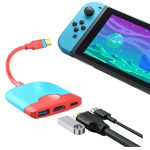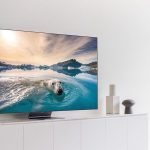Contents
- 1 TCommon HDMI Connection Problems and Solutions
- 2 Step-by-Step Guide to Fix HDMI-Monitor Connection Issues
- 3 Understanding HDMI Versions and Cable Types
- 4 The Role of HDMI Drivers in Connection Issues
- 5 Checking Monitor and HDMI Port Compatibility
- 6 How to Test Your HDMI Cable for Faults
- 7 Tips for Maintaining a Stable HDMI-Monitor Connection
- 8 When to Seek Professional Help for HDMI Connection Problems
TCommon HDMI Connection Problems and Solutions
Experiencing issues with HDMI not connecting to monitor can be frustrating. Thankfully, most problems have straightforward solutions. We’ll go over some common issues and their fixes.
No Signal Detected
This is a common message when the monitor is on, but not receiving input. First, ensure that both the HDMI cable ends are firmly connected to the devices. Sometimes, the solution is as simple as reseating the cable. If the issue persists, try a different HDMI port on the monitor if available.
Flickering Screen or Poor Resolution
If the screen is flickering, check the display settings on your computer. Ensure the resolution and refresh rate are compatible with your monitor. A poor connection can also cause flickering. Reconnecting the HDMI cable or switching to a new cable may solve the problem.
No Audio Through HDMI
HDMI not only carries video but also audio. If you’re not getting sound, first check the audio output settings on your device. Make sure it is set to the correct HDMI output. Sometimes, unplugging and replugging the HDMI cable can reinitialize the audio connection.
Autodetect Failing
Some monitors automatically detect input sources. If yours isn’t detecting the HDMI connection, manual selection might be necessary. Use the monitor’s physical buttons or on-screen menu to select the correct HDMI input.
Compatibility Issues Between Devices
Occasionally, older HDMI devices struggle to connect with newer ones due to differences in HDMI standards. To troubleshoot, check the manufacturer’s specifications for compatibility or consider getting an adapter or new cable that meets the necessary specifications.
Remember, patience and systematic troubleshooting are key. If these solutions do not resolve ‘hdmi not connecting to monitor’ issues, further investigation into hardware faults or professional assistance may be needed.
Step-by-Step Guide to Fix HDMI-Monitor Connection Issues
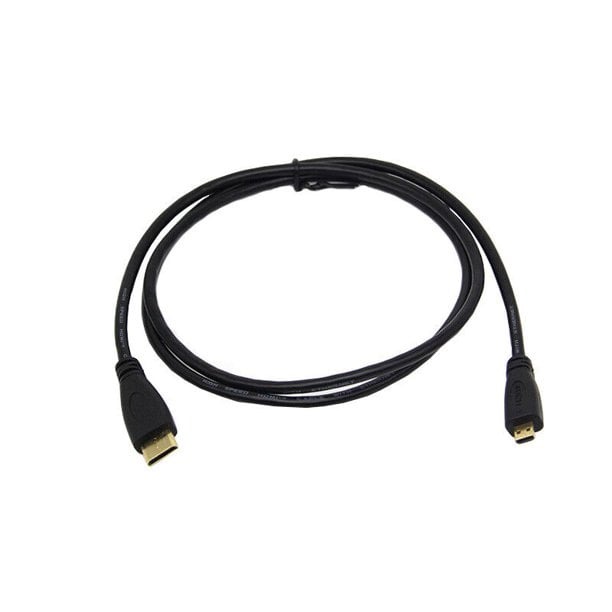
When facing issues with ‘hdmi not connecting to monitor’, follow this simple guide:
- Check Cable Connections: Start by checking the HDMI cable ends. Make sure they fit snugly at both the device and monitor ends.
- Inspect HDMI Ports: Try using another HDMI port on your monitor. Sometimes a faulty port is to blame.
- Restart Devices: Turn off both your computer and monitor for a minute. Then turn them back on. This can reset the connection.
- Adjust Display Settings: Go to your computer’s display settings. Ensure that the resolution and refresh rate match your monitor’s specifications.
- Check Audio Output: If there’s no sound, verify the audio output settings. Select the correct HDMI output.
- Use Monitor Menu: If auto-detect fails, manually select the HDMI input. Use the monitor’s physical buttons or on-screen menu.
- Update Drivers: Ensure your graphics card drivers are up to date. Outdated drivers can cause connection issues.
- Test with Another Device: Connect another device to your monitor using the same HDMI cable. This can help determine if the issue lies with the cable or devices.
- Change Resolution: Sometimes changing the computer’s resolution can re-establish the connection. Try a different setting temporarily.
- Consult Manufacturer Guides: Look for specific troubleshooting steps from the device manufacturers. They may offer model-specific advice.
By following these steps, you should be able to troubleshoot ‘hdmi not connecting to monitor’ problems. If none of these steps work, it may suggest a deeper hardware issue.
Understanding HDMI Versions and Cable Types
HDMI Standards and Their Capabilities
HDMI 1.4 brought support for 4K video but limited to 30 frames per second. The 2.0 increased that capacity to 60 frames per second, along with support for dynamic synchronization of video and audio streams. The latest, HDMI 2.1, supports resolutions up to 10K and features such as dynamic HDR and enhanced audio return channel (eARC).
Choosing the Right HDMI Cable
Not all HDMI cables are created equal. Standard HDMI cables are fine for 1080p content. High Speed HDMI cables support 4K at 30Hz, while Premium High Speed can handle 4K at 60Hz with HDR. The most advanced Ultra High Speed HDMI cables support the bandwidth required for all features of HDMI 2.1.
For best results, ensure your cable is matched to the HDMI version of your devices. If you’re using advanced features like 4K, HDR, or high frame rate content, invest in a cable certified for those capabilities. Remember to consider cable length as well, as longer cables can sometimes result in signal degradation.
The Role of HDMI Drivers in Connection Issues
Drivers are essential for the proper functioning of any hardware connected to your computer. This includes HDMI ports, which require correct drivers to function seamlessly. If you’re facing ‘hdmi not connecting to monitor’ issues, outdated, corrupted, or incorrect drivers could be at fault.
Firstly, check if your graphics card drivers are up-to-date. Out-of-date drivers can lead to compatibility issues and prevent your HDMI port from working correctly. You can visit the manufacturer’s website or use device management tools to find the latest driver updates.
If the drivers are current, and you’re still having trouble, try reinstalling them. This process will replace any missing or corrupt files that might be causing the connection problem. To do this, go to the ‘Device Manager’ on your computer, locate the graphics card under ‘Display adapters’, right-click and select ‘Uninstall device’. Then, reboot your computer which should automatically reinstall the drivers.
In some cases, you may need to manually download and install the drivers. This is often necessary if you’re using an older operating system or have a custom-built PC. Remember to download drivers that match your graphics card model and operating system version.
Lastly, it’s worth noting sometimes the issue may not be with the drivers at all but with the HDMI port itself. If you’ve updated or reinstalled drivers and the issue persists, it could be a sign of a faulty HDMI port.
In summary, keeping your HDMI drivers updated is critical to ensuring that ‘hdmi not connecting to monitor’ issues are minimized. Regular checks for driver updates, proper installation, and potential hardware checks for the port can save you from connection woes.
Checking Monitor and HDMI Port Compatibility
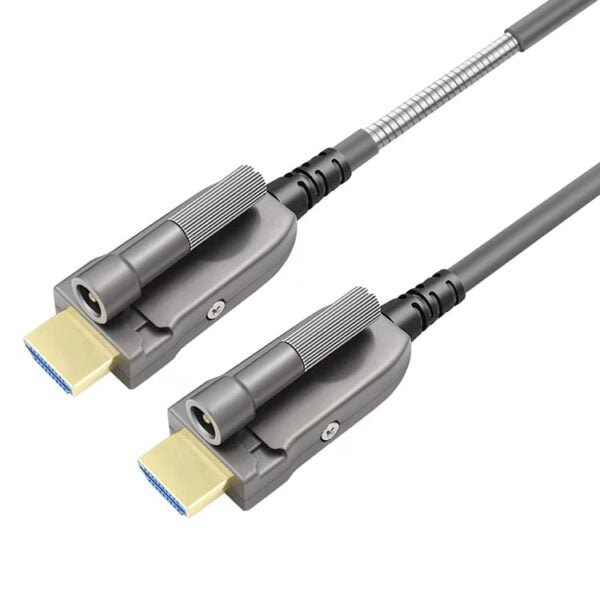
When your HDMI is not connecting to the monitor, consider compatibility. Monitors and HDMI ports must match in capabilities. Here’s how to check this:
- Identify Monitor Specifications: Look up your monitor’s model. Note its supported HDMI version, resolution, and refresh rate.
- Check Device HDMI Version: Ensure your computer or media device supports the same HDMI version as your monitor.
- Verify Resolution Support: Confirm your device can output the monitor’s maximum resolution.
- Discover Port Types: Some devices have different HDMI port types. Verify that they match or that you have the appropriate adapter.
- Examine HDMI Alternatives: If HDMI is not an option, check for other ports like DisplayPort or DVI. They might require adapters for use.
If compatibility is confirmed and problems persist, the issue might lie elsewhere. It’s essential to continue troubleshooting with different cables, settings adjustments, or hardware checks.
How to Test Your HDMI Cable for Faults
Testing your HDMI cable is a crucial step when troubleshooting ‘hdmi not connecting to monitor’ issues. Faulty cables can cause a range of problems, including no signal, poor resolution, or intermittent connectivity. Here are simple tests you can perform:
Check for Physical Damage: Examine the cable for any signs of cuts, kinks, or bent pins. Physical damage often results in connection problems.
Try a Different Cable: Swap out the current HDMI cable with another one that you know works. If the issue resolves, the original cable was likely at fault.
Cable Twist Test: Gently twist the HDMI cable at various points. This can reveal internal breaks if the screen flickers or the connection drops.
Connect to Another Device: Use the same HDMI cable to connect a different device to your monitor. Successful connection means the cable is probably good.
Signal Strength Test Software: Some advanced users might use software tools to test the signal strength of the HDMI cable. Weak signals can indicate cable faults.
If your HDMI cable fails these tests, replacing it with a new one, suited to your monitor’s specifications, is usually the best option.
Tips for Maintaining a Stable HDMI-Monitor Connection
Maintaining a stable HDMI connection prevents frustrations associated with ‘hdmi not connecting to monitor’ issues. Here are some tips to keep your HDMI-monitor connection robust:
- Use Quality Cables: Invest in high-quality HDMI cables that match the version and capabilities of your devices. Avoid cheap, low-grade cables that may fail unexpectedly.
- Regular Cable Checks: Periodically inspect your HDMI cables for any signs of wear and tear. Look out for cuts, kinks, or bent pins that might disrupt the connection.
- Keep Cables Organized: Prevent cable damage by avoiding tight bends and knots. Use cable organizers to maintain a neat setup, reducing strain and interference.
- Update Devices Frequently: Keep your devices’ software up to date, including the firmware for your monitor and graphics card drivers on your computer. Updates can fix bugs that cause connection problems.
- Avoid Unplugging Often: Constantly unplugging and replugging HDMI cables can wear out the connectors. Unplug only when necessary and do so gently to minimize wear.
- Secure Connections: Ensure that HDMI cables are snugly connected to the ports. Loose connections can lead to signal loss or intermittent connectivity.
- Use Shorter Cables When Possible: Longer cables can degrade the signal. If your setup allows, opt for shorter cables to maintain a strong connection.
- Limit Couplers and Adapters: Each additional component in your setup can potentially weaken the signal. Use couplers and adapters only when absolutely necessary.
- Monitor the Environment: Keep your cables away from high-traffic areas and potential sources of interference, like wireless devices or power sources.
By implementing these maintenance tips, you can significantly reduce the chances of facing ‘hdmi not connecting to monitor’ issues and enjoy a stable and consistent multimedia experience.
When to Seek Professional Help for HDMI Connection Problems
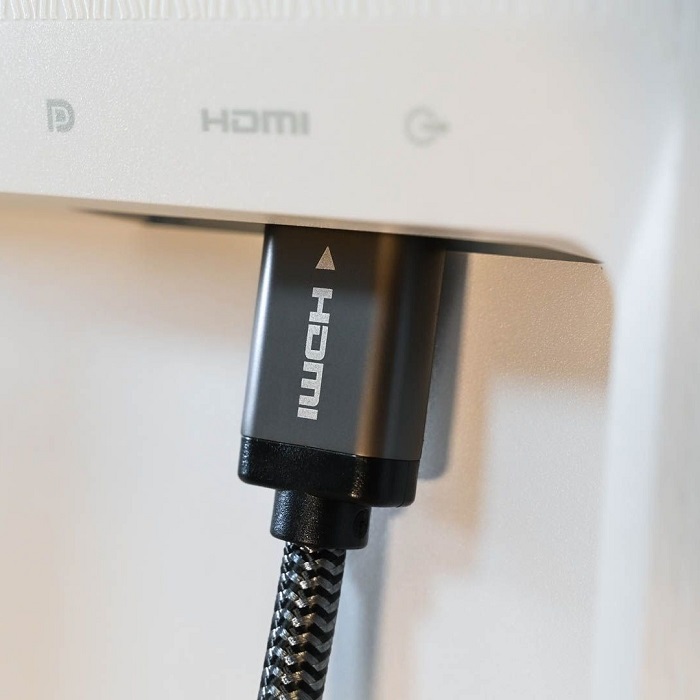
Sometimes, despite all troubleshooting efforts, ‘hdmi not connecting to monitor’ issues persist. In such cases, seeking professional help may be the best course of action. Here are indicators that it’s time to call in the experts:
- Persistent No-Signal Message: If you keep getting a no-signal message and have ruled out cable and port issues, a professional can diagnose deeper problems.
- Frequent Screen Flickers or Dropouts: If your screen often flickers or loses connection, a stable fix may require specialized knowledge.
- Sound Issues After Troubleshooting: When audio through HDMI doesn’t work after you’ve tried all the fixes, a technician can look into hardware or software conflicts.
- Unresolved Auto-Detect Issues: If your monitor fails to auto-detect HDMI input post troubleshooting, an expert may need to check the monitor’s internal components.
- Incompatible Devices or Signal Issues: When devices seem incompatible or signal issues continue, pros can offer solutions that might not be widely known or available.
- Damaged Ports or Internal Monitor Issues: If you suspect damage to the HDMI port or internal monitor problems, it’s safer to have them assessed professionally.
Going to professionals ensures your devices are handled safely and can save you time. Experts have the right tools and experience to quickly identify and solve ‘hdmi not connecting to monitor’ issues that go beyond basic troubleshooting.
